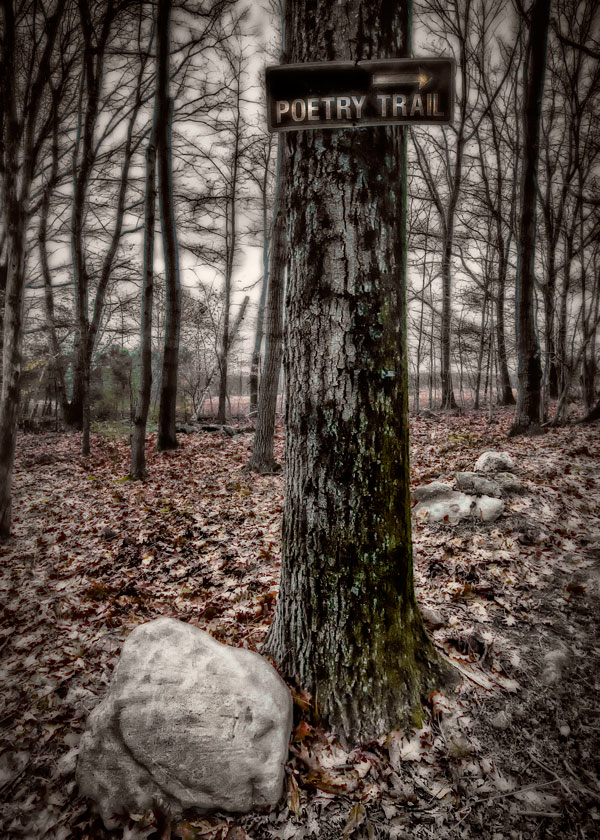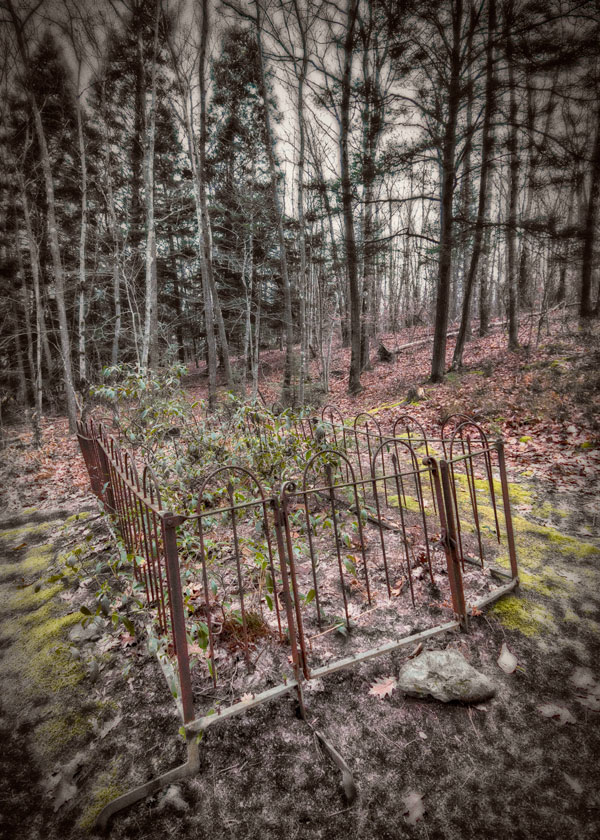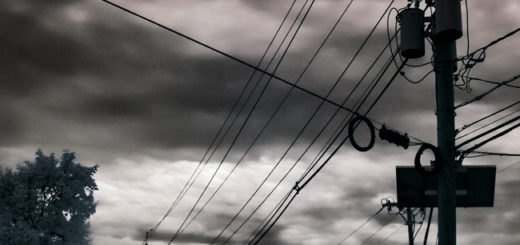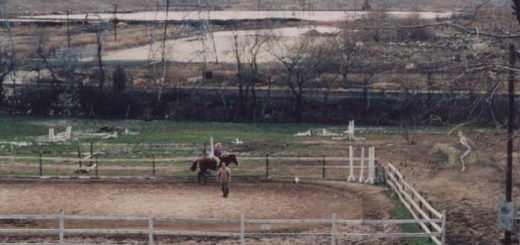The Poetry Trail
I was driving along a rutted dirt road on the far side of the river, through a landscape of scruffy pastures and second-growth woods. I saw a sign that said “Poetry Trail.” This was unexpected. No mention of it occurs in any trail guide I’m familiar with. I decided to investigate the matter. Parking at the trailhead was limited. Luckily nobody else was there.
I got out of the car and looked around. Affixed to a ragged maple was a wooden box with a hinged lid. Inscribed on the box were the words “Guide to the Poetry Trail.” I lifted the lid and looked inside. The box was empty. I peered down the trail and considered my options. The woods were swaying in the quickening gusts of a late December afternoon. I could hear the snapping of large branches from senescent trees and the crashes they made when hitting the ground. Daylight was waning. I chose to proceed.
Before long I encountered the first poem. It was posted on a sign next to the trail, a pleasant little nature lyric that rhymed. I read it aloud to no one in particular and continued on my way. Soon enough I arrived at the next poem, an ode to a wheelbarrow. It did not rhyme, but that was okay. I enjoyed it and resumed the journey. Next up was a love poem by an Episcopal priest. It was alright. After that, I was getting deeper in the woods. The poems started getting metaphysical. One was by an analytical philosopher. It was titled “Is Touching Possible?” I was having a hard time making sense of it. I feared becoming benighted. And that’s when the Poetry Trail took a lugubrious turn.
Next I knew, a decrepit iron fence blocked the way. It traced the bounds of what appeared to be a grave. No marker to explain what might be going on here, just a ragged shrub of mountain laurel, a few fallen leaves, and the dragon-roar of wind in the naked trees. I looked—oh did I look—but I found no further signs of the Poetry Trail. This was end of the line.




